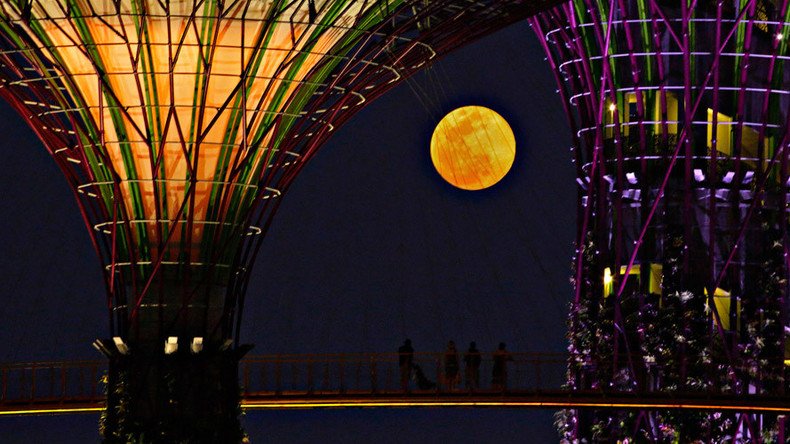Lunar base not as far away or as expensive as we think – study

We should be shooting for the moon, at least when it comes to space colonization, according to a study that claims a lunar base could cost as little as $10 billion and be ready by 2022.
Our natural satellite may have been long forgotten in favor of its more glamorous cousin Mars, but mankind should be concentrating on going (back) to the moon, according to a new scientific paper led by Scott Hubbard, an aeronautics and astronautics professor at Stanford University.
The paper argues the merits of creating a lunar base that could serve as a testing ground for future advanced technologies where research into further planetary colonization could be conducted. It may have been missing from the text, but we’re certain they meant to add that it would be a lot of fun too.
Cost is a major factor, as the Apollo 17 landing in 1972 ended up costing around $150 billion by today’s standards, an amount unlikely to be spent on space exploration today. The paper suggests ways to keep costs for a lunar base under $10 billion, including working with private companies and the use of new technologies such as self-driving cars and waste-recycling toilets.
Under their plan, robots named “MoonCats” would arrive first to prepare landing pads and set up solar panels. Elon Musk’s SpaceX, which is in the testing phase, would be used to bring up payloads before humans finally arrive as the base becomes more habitable. The robots would then serve as slaves to mankind, and definitely never ever revolt and kill us all.
Technology is being developed for a possible mission to Mars, including a NASA machine that can extract oxygen from dirt. Go NASA.
By exploiting all of these possibilities, 10 people could be living up on the moon by 2022 at the low cost of less than $10 billion, according to the study. At that price, we’re already losing money by not going.
The scientific community is split on the idea of returning to the moon, with some having a “been there, done that” attitude. The second man on the moon, astronaut Buzz Aldrin, has dismissed such plans as a waste of time, instead championing the “Mars to Stay” program, which is focused on sending people on a one-way trip to Mars, with the understanding that they will probably never return.
Buzz Aldrin has called for a human colony on Mars! https://t.co/sx3Onu9PWz@CBSNews@TheRealBuzzpic.twitter.com/ISc1W1fnp4
— Mars One (@MarsOneProject) March 4, 2016
Whether it’s Mars or the Moon, we just want a holiday to somewhere that isn’t full of selfie-taking tourists. Let’s just hope this creepy fella isn’t there.












